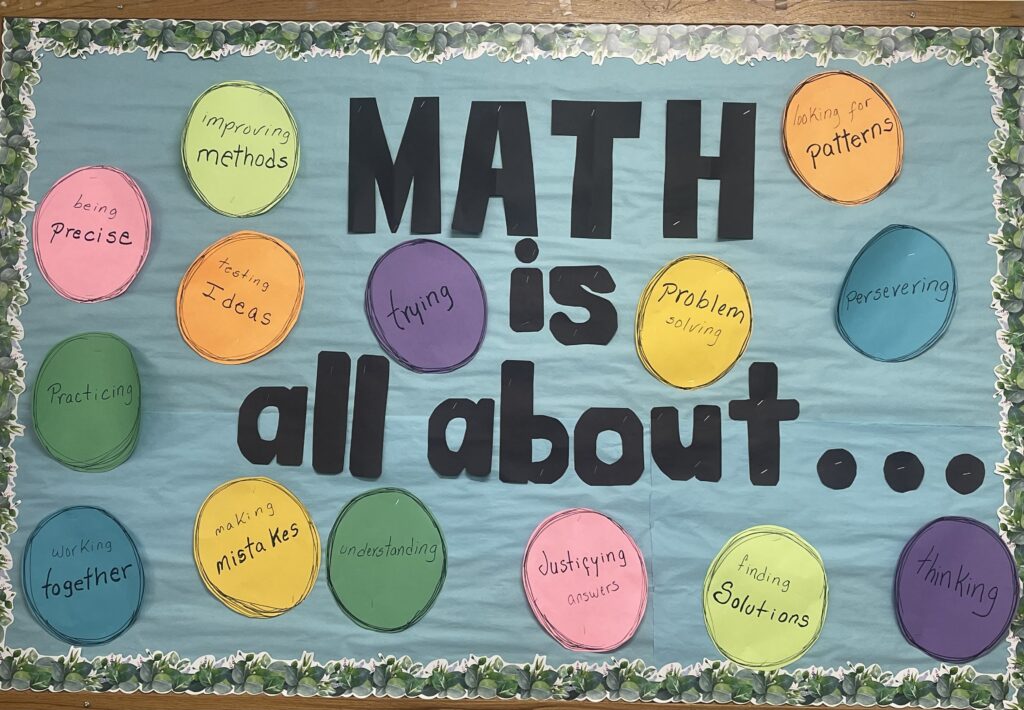
I wasn’t expecting a math journal entry to shift my perspective. But as I scanned through my students’ reflections that morning, one response stopped me in my tracks:
“It’s more important to me that my teacher sees me as a person than if I get all the answers right.”
A student, who I’ll call Jason, had been in my class for months — quiet, polite, barely noticeable. Not failing, not thriving. Just…there.
Jason’s words reflected what many students feel but rarely say. As I reviewed other journal entries, I discovered an echo of voices expressing uncertainty, quiet resilience and a desire to be heard. I highlighted themes and let their words settle in, but as responses piled up, I needed help seeing the bigger picture.
That’s when I turned to artificial intelligence (AI), using it to help summarize journal entries — not replacing my judgment but sharpening it. ChatGPT surfaced patterns I might have missed: anxiety about speaking up, appreciation for kindness, the importance of being seen. AI didn’t give me a summary of responses — it gave me perspective, revealing what my students were telling me between the lines.
Too many students walk into math class carrying untold stories — about race, failure, shame, invisibility. And math, with its perceived rigid right-or-wrong structure, often leaves little room for the messiness of being human. Reflective journals and AI made that space. They reminded us that learning is emotional before it’s cognitive.
Some view AI in education as a threat to authenticity — something that might replace meaningful learning, weaken rigor, and erode the relationships. Much of the conversation focuses on fears of cheating and weakened critical thinking. But in my experience, the opposite is possible. When used thoughtfully, AI doesn’t dehumanize the classroom — it rehumanizes it, helping us tune in to students’ emotional landscapes and respond with greater clarity and compassion.
For educators exploring how to move from algorithms to empathy, here’s what I’ve learned:
Use AI as a reflection partner to surface trends in student voice. I introduced reflective journals with prompts like “How do you see yourself in math?” and “Where might math be important in your life?” When responses accumulated, AI helped me identify emotional throughlines—what students feared, valued, and needed to feel seen. It didn’t analyze feelings for me; it spotlighted patterns across dozens of responses, allowing me to respond not just as a content expert, but as a listener who could address the class’s collective needs.
Let AI handle the grunt work so you can do the heart work. After AI helped me identify themes like “I don’t feel smart, but I try harder than people know” and “I’m not the only one scared to ask for help,” I shared these anonymous insights with my class. Heads nodded. The room shifted. These reflections weren’t about fixing students — they were about making space where vulnerability felt safe and mathematical identity could evolve.
Design with AI — not for it. I didn’t start by asking what AI could do, but rather “What do my students need to feel seen, challenged and supported?” Only then did I explore how technology could help me meet those needs more thoughtfully and efficiently. The tools followed the vision, not the other way around.
Treat AI like a co-teacher, not a substitute. AI will never replace the personal connections at the heart of teaching, but it can help me see what I might miss in the everyday chaos of the classroom. This partnership allows me to combine technological insights with the relational knowledge that only comes from knowing my students.
The day after reading Jason’s journal entry, I greeted him more intentionally and shared that I had once felt the same way about being seen as a person first. It was a tiny signal: I see you. This breakthrough emerged from recognizing that community building in math class doesn’t require elaborate group projects or icebreakers. Sometimes it starts with something quieter: giving students space to examine their relationship with mathematics itself, then using AI to help us listen more deeply to what they’re telling us.
A week later, Jason lingered after class. “Thanks,” he said. “For, like, sharing with me.”
That two-second moment cracked something open — for both of us. Because behind every silence is a student waiting to be seen. And sometimes, the most powerful data we can use isn’t a test score or a benchmark — it’s a journal entry, a nod of recognition, or a quiet “thank you” made visible with the help of AI, reminding us why we teach.
•••
Al Rabanera teaches math at La Vista High School in Fullerton, California. He is a 2025-2026 Teach Plus Leading Edge Educator Fellow.
The opinions expressed in this commentary represent those of the author. EdSource welcomes commentaries representing diverse points of view. If you would like to submit a commentary, please review our guidelines and contact us.

دیدگاهتان را بنویسید